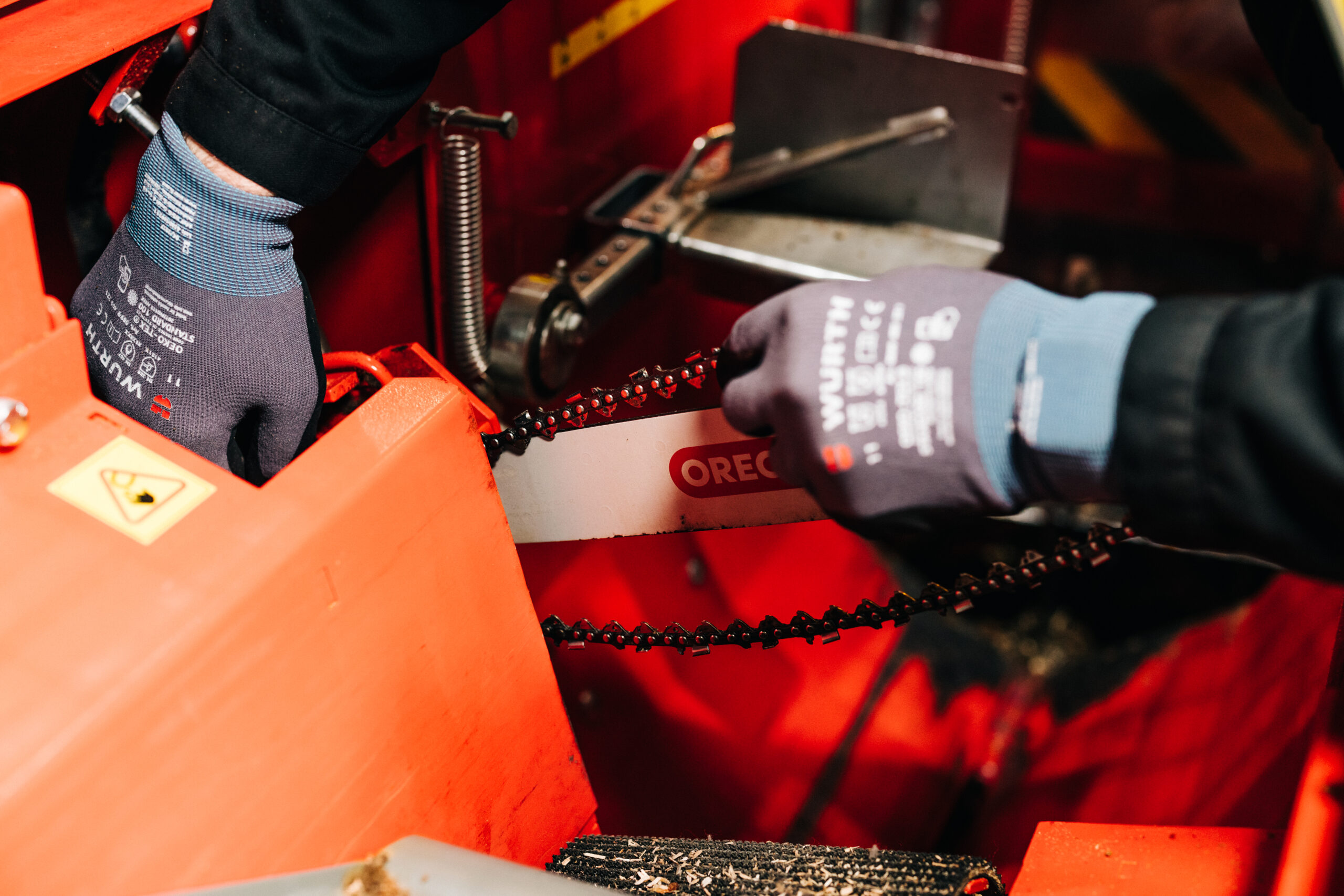
Hakki Pilke’s maintenance video series gives useful tips for the maintenance of your firewood processor
By conducting regular maintenance on your firewood processor, you ensure optimal performance, guaranteeing efficient firewood production and minimizing unnecessary interruptions. Moreover, consistent maintenance reduces wear and tear on wearing parts, resulting in direct cost savings and significantly prolonging the lifespan of your firewood processor for decades to come.
Performing periodic visual condition checks on your firewood processor is also beneficial. This enables you to detect possible defects ahead of time. The Maintenance videos found on Hakki Pilke’s YouTube channel gives clear instructions for performing general maintenance procedures, as well as safety instructions that must be followed during the maintenance.
Change of hydraulic oils and filters
One of the most crucial regular maintenance procedures is the routine inspection and replacement of hydraulic oils and filters. By ensuring clean oil and filters, you guarantee uninterrupted operation of the hydraulic components in your firewood processor while maintaining optimal oil temperature levels.
Contaminated oil can lead to a range of issues, including increased wear on components, hydraulic part joint leaks, excessive heat generation, or a decrease in oil pressure due to clearance leaks. These problems can result in malfunctions of crucial firewood processor parts that rely on hydraulic power. Condensation or leaks can also result the oil to mix with water. The mixture of water and oil not only accelerates part wear but also poses a significant risk of damaging processor components, as water’s hydraulic properties are notably inferior to those of oil.
For the new Hakki Pilke firewood processor, it is recommended to perform the first oil change for the hydraulics and multiplier gear after 100 operating hours. If the firewood processor is used less frequently, the first oil change should be carried out after the initial operating period. After this, oil changes should be conducted every two years or every 500 operating hours, whichever comes first. Additionally, it is important to check the oils and filters and, if necessary, replace them each time the processor is put into operation after a break or when it has been idle for an extended period of time.
Bleeding the saw chain oil pump
In the event that air gets trapped in the tank or lines of the saw chain oil pump, proper oil flow to the chain is hindered, resulting in increased wear between the chain and the chain bar. To ensure optimal performance, it is important to bleed the pump, eliminating any air from the lines and enabling smooth oil flow to the saw chain.
Depending on the model and equipment of your firewood processor, it can have either hydraulically or electrically operated saw chain oil pump.
Bleeding of the hydraulic pump takes place in the following way:
The bleeding of the electric pump, on the other hand, takes place in the following way:
Maintenance of chainsaw chain and chain bar
Maintaining the chainsaw chain and chain bar in optimal condition plays a vital role in maximizing the speed and efficiency of your operation. A dull saw chain not only hampers proper wood cutting but also leads to excessive heating and wear on the chain bar and sprockets.
In professional usage, it may be necessary to replace the chainsaw chain daily. To learn more about checking and maintaining the condition of the chain and chain bar, refer to the following maintenance video:
To sharpen a dull chainsaw chain, you have two options: manual sharpening using a round chainsaw file or using an electric chainsaw grinder. When sharpening by hand, utilizing accessories such as file holders and filing templates can make the process significantly easier. Using an electric sharpener provides a quick and effortless way to achieve accurately sharpened chain edges.
To ensure even wear on both sides of the chain bar, it is recommended to periodically rotate it. A general guideline is to rotate the chain bar every third use. Visually inspect the chain bar for any signs of bending or cracked rails. If such damage is present, the chain bar should be replaced with a new one. To determine if the bar is straight, align it as you would the sights on a rifle. Additionally, the chain bar should be replaced if it has worn to the extent that the chain no longer properly rests on the rails.
Greasing your firewood processor
Applying grease to your firewood processor is essential in reducing the wear of crucial parts and ensuring prolonged operational reliability and lifespan. In the accompanying maintenance video, you’ll find a demonstration of key greasing points of a firewood processor. For specific greasing points and recommended intervals tailored to your firewood processor, refer to the user manual provided with your equipment.
DO YOU HAVE IDEAS FOR NEW MAINTENANCE VIDEOS?
You can submit ideas for topics for future maintenance videos via the video comment fields or our social media channels. We also welcome comments and development suggestions regarding the content and production of the videos!



